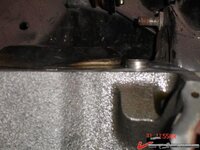69427
The Artist formerly known as Turbo84
Looking at the TRW/SpeedPro charts for standard bore pistons for my next engine, it looks like my choices end up resulting in either a 9.07 or a 10.83 compression ratio. I would have preferred something in the middle. I could run any cheap crap fuel with the 9.07 pistons, but I'm wondering with the aluminum engine (block and heads), the 10.83 CR might be somewhat knock insensitive. Opinions? What are some of you BB guys running for compression these days? The combo I'm looking at is: 110cc chambers, 10.5cc head gasket volume, 1.765 piston compression height (resulting in .020 inch below deck level?), 36.3cc dome in one set of pistons, 16.8cc in the other, 6.135" rods, 3.76" crank.
I welcome any checks on my math here, and thoughts on the piston choice.
Mike
I welcome any checks on my math here, and thoughts on the piston choice.
Mike


